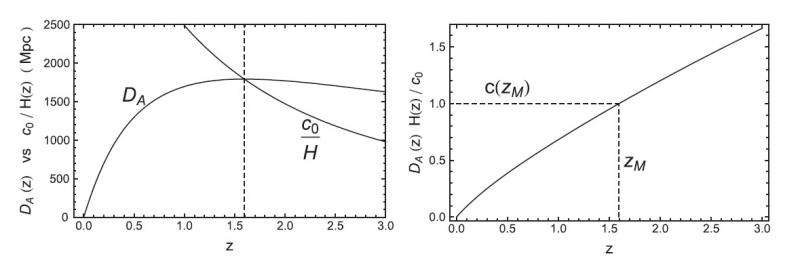April 6, 2015 feature
Physicists propose method to measure variations in the speed of light

(Phys.org)—The speed of light, c, is one of the best-known constants, having a value of just under 300,000,000 meters per second in a vacuum. But in some alternative theories of cosmology, the speed of light is not actually constant, but varies throughout time and space. Observational data in support of variations in the speed of light are lacking, but in a new paper, physicists have proposed a way to constrain possible speed-of-light variations and show that future experiments might be able to detect these variations, if large enough.
The physicists, Vincenzo Salzano, Mariusz P. Dąbrowski, and Ruth Lazkoz, at universities in Poland and Spain, have published their paper on measuring variations in the speed of light in a recent issue of Physical Review Letters.
"When the data collected by future missions become available, our model will be able to detect a variation of 1% in c in the more pessimistic case, and down to 0.1% in a more optimistic scenario," Salzano, at the University of Szczecin in Poland, told Phys.org. "We want to stress that the main novelty of our method is that it relies on a direct measurement of the speed of light at the cosmological level, with a very minimal number of assumptions about the dynamics of the universe. Other probes, even if giving slightly better constraints, can only test indirect probes and assume c as one of the many cosmological parameters to be determined."
The new method relies on observations of baryon acoustic oscillations, along with a mathematical relationship. Baryonic acoustic oscillations refer to the clustering of baryonic matter in the universe that led to large-scale structures, such as galaxies. To measure how far away a distant object is in space, scientists must account for the object's redshift since the universe is expanding. They do this by using the angular diameter distance, which increases as redshift increases, but only up to a point, which the authors call the maximum redshift, when it starts to diminish. The exact value of the maximum redshift is not known because it depends on the cosmological model used, but it is somewhere between 1.4 and 1.8.
The new method also relies on a mathematical relationship: when evaluated at the maximum redshift, the angular diameter distance (DA) and the Hubble function (H) give the value of the speed of light c through the relation DA(zM)H(zM) = c(zM).
"Here, the distance DA plays the role of a ruler, while the inverse of the Hubble function plays the role of a clock, and their ratio gives the speed of light at the maximum redshift," Salzano explained.
Using the observational data of the angular diameter distance and Hubble function, the physicists were able to calculate a value for the maximum redshift of just under 1.6. This value can then be used to evaluate the above relation and estimate any possible variation in the value of c, should it exist.
The physicists also investigated whether it may be possible to detect variations in the speed of light using future experiments, such as Euclid, a spacecraft to be launched in 2020. They predict that Euclid will be able to detect variations that are 1% or greater with reasonable accuracy, but smaller variations will be more difficult to detect. At this point, observations indicate that any variation in the speed of light would most likely be smaller than 1%. However, Euclid and other surveys may still have a chance of detecting smaller variations if observational errors are sufficiently small.
"Our method is almost perfectly fit for Euclid: it would give its best with an experiment entirely designed on it, but even so, it will be possible to apply it to Euclid data in a very straightforward way," Salzano said. "Therefore, some result will surely be obtained: if positive (detection of a variation of c) or not (constancy of c confirmed), it will be equally important for the understanding of our universe and the validity of Einstein's relativity."
Detecting variations in the speed of light over time could have several interesting consequences.
"If the speed of light was different in the remote past, then this would have some consequences for the future of life in our universe," Salzano said. "Perhaps, it could also prove that some other pieces of the universe or even other universes with different physical properties could exist—ones in which, for example, the radio, television or mobile phone transmission signals would be slower than on the Earth. If the speed of light was larger, we would see more of the universe; if it was smaller, we would see less of the universe."
More information: Vincenzo Salzano, et al. "Measuring the Speed of Light with Baryon Acoustic Oscillations." Physical Review Letters. DOI: 10.1103/PhysRevLett.114.101304
Journal information: Physical Review Letters
© 2015 Phys.org



















